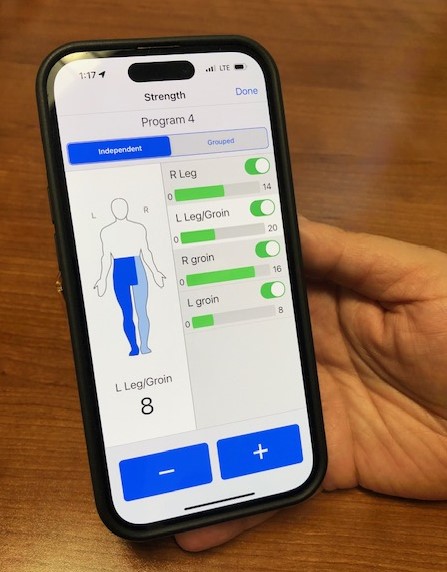For nearly two years, Liz Turnipseed has dealt with physical and emotional pain related to her being shot during Highland Park’s 2022 Independence Day parade, but says she is getting better thanks to a relatively new surgical procedure.
Like so many others, she woke up on that July 4 morning anticipating a fun-filled day of watching the parade with her family. However, a gunman opened fire on the festivities killing seven and injuring dozens more, including Turnipseed.
She was transported to Northwestern Medicine Lake Forest Hospital with pelvis and leg wounds. Her organs and bones were not directly hit, but there was nerve and tissue damage. In addition, she had a 14-centimeter wound on the back of her leg, leading to severe pain. Doctors did not remove the shrapnel believing that would be too risky.
As the months after the shooting passed, there were multiple stays in the hospital for Turnipseed, but she said her physical pain and mental anguish continued.
“When you are in chronic pain, it wears you down,” she said. “I tried to remain hopeful and focused, as I had a full-time job, so I am trying to manage through all of that. But, there were absolutely days I was frustrated, and there was always anger because something happened to me that never should have happened to me.”
The constant burning and shooting pain in her pelvis made simple walks outside or playing with her daughter challenging, if not impossible. Turnipseed’s doctors eventually suggested she visit Dr. Jason Ross, an anesthesiologist and pain-management specialist at Northwestern Memorial Hospital in Chicago.
Ross used injections and medications that provided short-term relief, but long-term problems remained. He then recommended a dorsal root ganglion stimulator, or DRG.
“We were getting to the point that some of the more conservative options were exhausted, and I thought the DRG option was a reasonable option for her,” he said.
The DRG procedure — which has been around for about 10 years — comes in two parts, where doctors insert a stimulator focusing on the dorsal root ganglion nerves that serve the pelvis region, Ross said. After surgery, patients can use a held-hand held iPod, or an iPhone app, to change the stimulation settings within prescribed limits.
Turnipseed did some online research and opted to have the surgery in November. Her situation improved immediately, and said she continues to make progress in the months since.
“If I am having a day where I have increased pain or something going on, I can go into the app, and pick the part of my body where I am having issues and turn up the intensity of the device,” she said.
DRG represents an evolution in spinal cord stimulation that, in general, has been around for about six decades, but was not always effective for certain types of pain, including in the pelvis.
“It is very effective in the correct type of person,” Ross said.
While it is unclear how often DRG is used, Ross said about 50,000 spinal cord stimulators are implanted each year.
Ross stressed that DRG is not for everyone, and it isn’t the first option he would recommend for someone with a painful condition.
“A lot of times, you should exhaust more conservative management before you consider a surgical intervention,” he said.
He said DRG is covered under certain health insurance plans, but it depends on a patient’s diagnosis.
“Sometimes that is the most complicated part,” Ross said. “I wish these were available for everyone, but unfortunately that is the world we live in and it can be a challenging environment to navigate.”
As for Turnipseed, she is still taking a high dose of a nerve-pain medication with serious side effects. If the pain continues to ease, she hopes to lower the dosage.
She can walk more now, including taking out the family dogs or getting to an airport gate within a reasonable distance of the entrance. However, there is still a ways to go.
“I’ve made a ton of progress,” Turnipseed said. “I’m infinitely better than where I was, but I still have pain. I can wake up the next day and feel pretty good, but before DRG, that wasn’t the case.”
She is grateful for that initial suggestion to meet Ross.
“I’m glad I have a doctor who is innovative, and willing to work with me and helping me get better,” she said.
Ross said, “Being able to restore some normalcy to her life is honestly one of the best successes of my career.”




